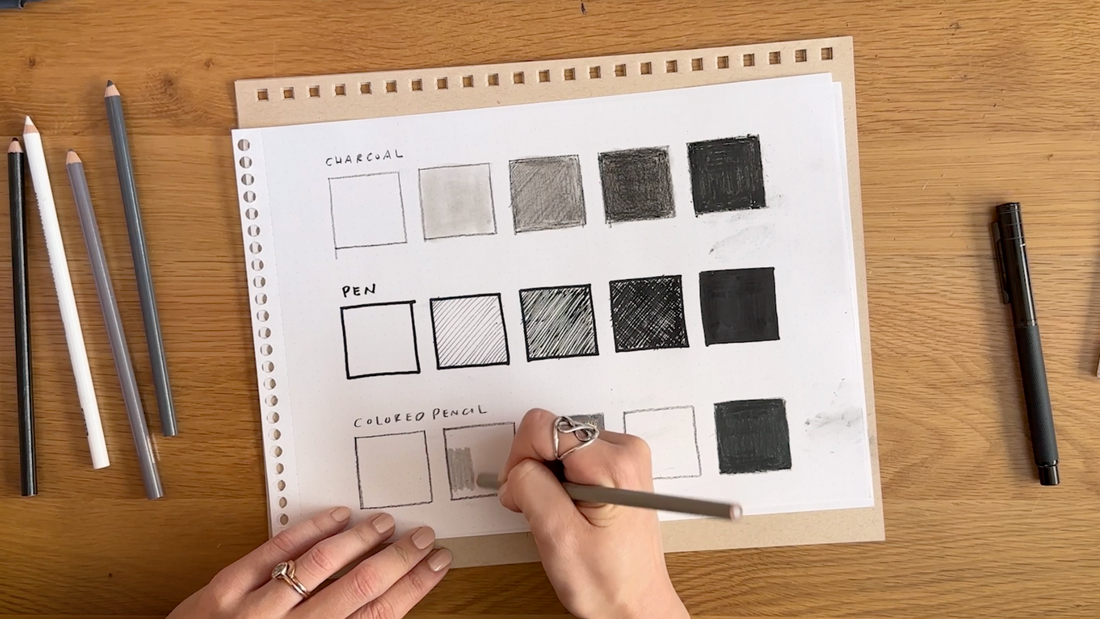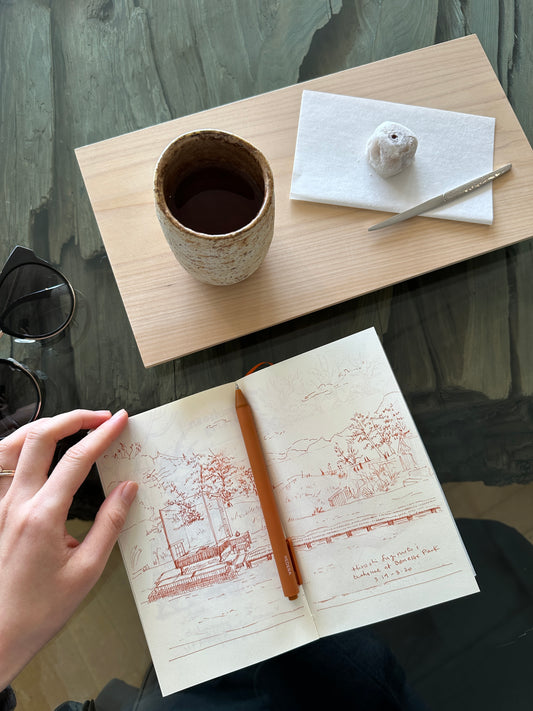Value control is an essential aspect of a good drawing, but it can be challenging to learn because it can seem “boring” compared to color! However, mastering value is crucial for achieving depth and realism in your artwork. Let's delve into this fundamental concept and explore its significance.
Understanding Value
Value, also known as tone, refers to the lightness or darkness of a color or object on a scale from white to black. Value gives a 2D drawing the illusion of form by showing light and shadow. It's also important for so many other reasons, such as:
- Creating depth and dimension in your artwork.
- Establishing contrast and focal points.
- Communicating mood and atmosphere.
- Enhancing the visual impact and realism of your drawings.

Make Your Own Value Scales
Get familiar with rendering value in your own materials by making a value scale.
A value scale showcases the complete range of values, from light to dark, that encompass everything we observe and draw. This will help you see the full range of values at your disposal and learn how to render them in your favorite mediums.
Here's a step-by-step guide to creating your own value scale:
1. Pick a medium (or several) that you like to use. Charcoal is a popular choice because it can produce a true black.
2. Decide how many values to include in your scale. 5 is a good place to start. You can outline squares or circles for each value.
3. Fill in the darkest value with the darkest shade you can make with your medium.
4. Keep the lightest value blank (using the white of the paper).
5. For the middle value, fill It in lightly until it is 50% between the lightest and darkest values.
6. Repeat this step to create the fourth value (halfway between the middle and darkest value), and the second value (halfway between the lightest and middle value).
Tip: Depending on the medium you're using, you can experiment with different techniques to create the values. For instance, in pen drawings, you can try cross-hatching to generate middle values.
How to Use your Value Scale
Your value scale is a helpful "cheat sheet" to choosing values for your drawings and value studies. Here's how you can effectively utilize it:
-
When drawing, compare the value of the subject you're observing with the values on your scale, to accurately represent it.
-
In value studies, use your value scale as a guide to restrict yourself 3 or 5 values to enhance your understanding of value relationships.
For more information on value and how to use it in your art, see my Drawing Foundations class. It offers in-depth guidance on value control and a wealth of other essential skills! You can learn more and sign up here.
Happy Drawing! -M




